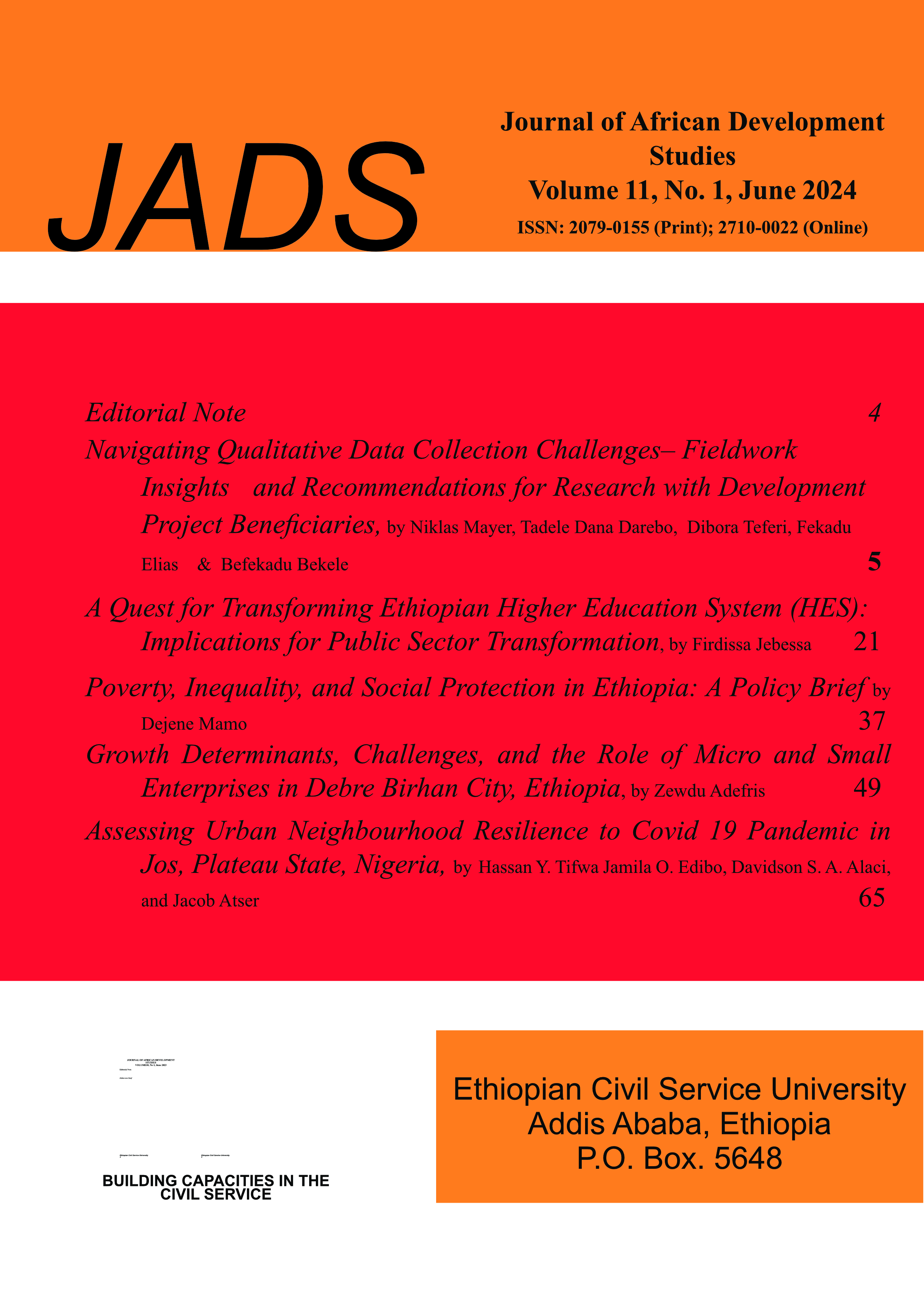A Quest for Transforming Ethiopian Higher Education System (HES): Implications for Public Sector Transformation
DOI:
https://doi.org/10.56302/jads.v11i1.10291Keywords:
Reform, Higher Education, Transformation, Quality Education, Public SectorAbstract
The Higher Education System (HEIs) are demanded, nowadays more than ever before, to be frontiers of public sector transformation by directing their research, teaching, and services to societal needs; and by delivering transformative outcomes. Practically, nonetheless, the Ethiopian HES is currently facing unprecedented challenges, which cannot be abated unless systematic transformation is put in place. The Purpose of the study was, therefore, to investigate the hitherto reform rationales and the causes for some reform failures, and the feasible expeditions for transforming the Ethiopian HES. Exclusively a qualitative approach was used by generating data from document scrutiny and interviews. The results have shown that the hitherto reform rationales were the HEIs’ mandates, aspirations, expectations; dynamisms, challenges; and failed previous reforms due to top-down initiatives, loose accountability and momentum, unengaged leadership, undesirable institutional culture, piecemeal/surface symptoms, nominal board assignment and culture, unaligned budget with mission, overly and ineffective communication, and focusing just on the visible ignoring the invisibles. Ways of transforming the HES and sustaining it demands aligning transformation initiatives with the institutional mandates, aspirations, expectations, and the dynamisms; progressively overcoming the challenges; approaching transformation systemically; transforming the very assumptions of HES; building a culture of indigenous knowledge paradigm; institutionalizing transformation endeavors; enhancing ownership and instructional leadership; and enforcing autonomy with accountability.

Published
How to Cite
Issue
Section
License
Copyright (c) 2024 Journal of African Development Studies

This work is licensed under a Creative Commons Attribution-NonCommercial-ShareAlike 4.0 International License.




